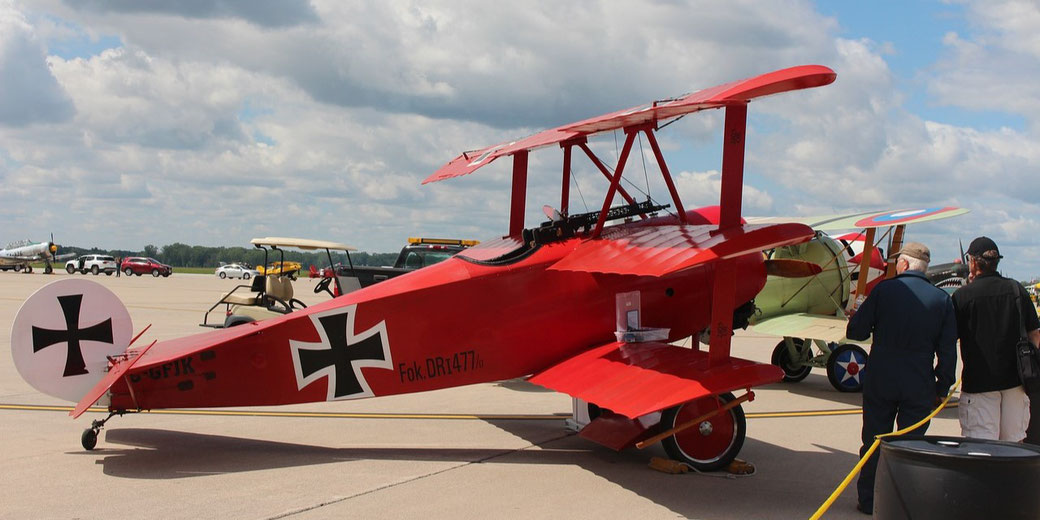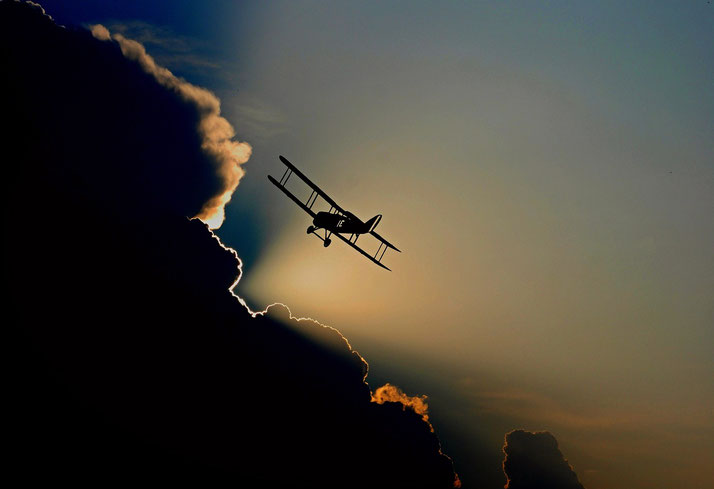Rise and fall of the Red Baron, Germany's greatest WWI fighter ace

The skies above the trenches of World War I were a dangerous and unpredictable place, where pilots faced death on a daily basis in brutal dog fights.
Amidst this chaos, a legend emerged: a pilot whose skill and bravery were unmatched. He was the 'Red Baron', a German fighter ace who shot down over 80 enemy planes and became a symbol of aviation prowess and heroism.
Even over a century later, he is still famous. Here is his remarkable story...
Who was the Red Baron?
Manfred von Richthofen, the man who would become the Red Baron, was born in Breslau, Germany (now Wroclaw, Poland) in 1892.
von Richthofen came from a family of aristocrats and military officers, and he followed in their footsteps by joining the German army in 1911.
When the war broke out in 1914, von Richthofen was initially assigned to the cavalry, which was common for people from aristocratic backgrounds like his own.
However, he quickly transferred to the German Air Service, which was a new and rapidly evolving branch of the military.
As a result, it was in the air that von Richthofen found his true calling. He quickly distinguished himself as a skilled and daring pilot.
Soon, he was even appointed to command his own squadron. He made the decision to paint his planes bright red to make them more visible to his fellow pilots.
It was this flamboyant gesture that earned von Richthofen his nickname, the "Red Baron".
Over the course of the war, von Richthofen would shoot down 80 enemy planes, making him the most successful fighter pilot of the First World War.
What made this figure even more impressive, is that he accomplished it while flying a variety of planes, including his famous Fokker Dr.I triplane.
The art of dogfighting in WWI
Allied pilots feared meeting the Red Baron in combat. This is primarily because he was incredibly skilled in the art of dogfighting: one of the most challenging aspects of WWI aerial warfare.
During World War I, dog fights were incredibly dangerous due to a variety of factors.
One of the primary reasons was the open cockpit design of the planes used during this time.
These planes were small, lightweight, and often made of wood and canvas, leaving pilots fully exposed to the elements.
In addition, this meant that they had no protection from bullets, shrapnel, or other airborne debris.
It is important to remember that at the start of the war, parachutes were not yet a standard piece of equipment for pilots.
As a consequence, if a plane was hit and went down, the pilot would have no escape and likely be killed or severely injured.

In addition to these physical risks, pilots faced a number of challenges related to the rapidly evolving technology of aviation.
New planes, weapons, and tactics were constantly being developed and tested. Pilots had to adapt quickly to stay 'ahead of the game'.
Furthermore, dog fights often took place at high altitudes where the air was thin and cold.
This exposing pilots to hypoxia (a lack of oxygen), which could cause them to become disoriented, confused, or even pass out completely.
Another major factor was the limited visibility that pilots had to contend with.
Pilots had to rely on their own eyesight to spot enemy planes, and this was often difficult in the heat of battle.
Moreover, dog fights often involved close combat, with pilots coming within just a few feet of their opponent's plane.
This meant that they had to be extremely skilled and precise in their movements to avoid collisions and enemy fire.
Why was the Red Barton so deadly?
Understanding how difficult the nature of air combat was, we can gain a better appreciation for why the Red Baron became so famous and fear.
From a young age, he displayed excellent hand-eye coordination, spatial awareness, and quick reflexes.
He also reported to have had a strong competitive spirit, which helped him to push himself to be the best pilot he could be.
Secondly, the Red Baron was described by those who served with him as a skilled tactician who developed a deep understanding of the principles of air combat.
He apparently knew how to read his opponents' manoeuvres and was able to quickly anticipate their next move.
This allowed him to position himself strategically for the best possible attack.
Also, the Red Baron became legendary for his aggressive attitude and keen willingness to take risks.
It was said that he was not afraid to engage in close combat. This would often see him pursue his opponents relentlessly until he was able to bring them down.
This tenacity and persistence were key to his success in many of his dog fights.
Ultimately, the Red Baron may have had a technical advantage over his victims in the Fokker Dr.I triplane.
This was a plane that was superior in many ways to the planes flown by his opponents.
The Fokker Dr.I was extremely maneuverable, which allowed the Red Baron to perform tight turns and sharp dives that other pilots could not replicate.
He also customized his plane to his own specifications, adding guns and other modifications to make it even more effective in combat.

What happened to the Red Baron?
Despite his success, von Richthofen was not invincible. He was wounded several times during the war, and in July 1917 he suffered a severe head wound that forced him to take a long break from flying.
Eventually, he returned to active duty in October 1917, but he was only able to fly for a few months before he was shot down and killed.
The exact identity of the person who shot down the Red Baron, Manfred von Richthofen, is still a matter of controversy and debate among historians and aviation enthusiasts.
At the time of his death on April 21, 1918, von Richthofen was flying over Morlancourt Ridge in France when he was hit by a single bullet.
He managed to land his plane in a field, but he died shortly afterward from his injuries.
Various theories have been proposed over the years regarding who was responsible for shooting down the Red Baron.
Initially, the credit for the kill was given to Captain Arthur Roy Brown, a Canadian fighter pilot who was flying in the vicinity at the time.
However, some researchers have since questioned this claim, citing evidence that suggests von Richthofen may have been hit by ground fire or shot down by another British pilot, Lieutenant Wilfred May.
In recent years, some experts have even suggested that von Richthofen may have been hit by friendly fire from his own side, as there were numerous German anti-aircraft batteries firing at the same time as the dogfight.
What do you need help with?
Download ready-to-use digital learning resources
Copyright © History Skills 2014-2025.
Contact via email
With the exception of links to external sites, some historical sources and extracts from specific publications, all content on this website is copyrighted by History Skills. This content may not be copied, republished or redistributed without written permission from the website creator. Please use the Contact page to obtain relevant permission.





